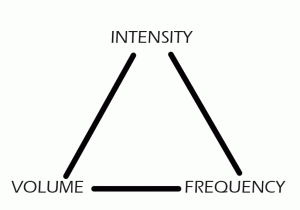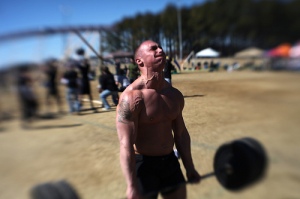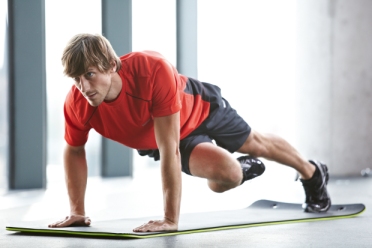I’ve been in a training rut lately. Going through the motions without a clear goal. This either changes now or I may just hang the towel and start something a bit more fun. Fitness, as many other hobbies, should be enjoyable. So, changes ought to be made.
Why make a game out of fitness
Why am I doing this? Mainly to make it fun again. Making fitness a game is a fun way to track, plan and do your workouts. Making a game out of fitness allows me to see where I stand, and where I want and need to go easier. So, I’m making this a game. I’m RPG-ing my workouts.
Why make it like an RPG
The structure of an RPG game makes perfect sense in fitness; you’ve got all the elements. But we’ll focus only on character progression. So we’ve got:
- Character stats: This shows the present. How strong, conditioned, flexible, mobile, etc.
- A leveling up pattern: This is when your stats change. You get stronger, more flexible, mobile, better conditioned, better balanced, etc. and you gain new skills and abilities.
- Miscellaneous skills: These are side skills not directly related (or anywhere close) to fitness. As you did in Skyrm, you can become an alchemist, you get better at wielding weapons, you get better at magic. In real life you can get better at those, true, or we can get parallel: you become a better at other unrelated skills that make your character whole, you learn to cook, you learn to groom, you learn to write. These may not directly affect your fitness, but no good RPG is without its side quests.
So as I said before, it makes perfect sense from a tracking and planning standpoint. Your character starts at level 1/whatever level it is you are at, and you plan accordingly on what you want to improve and maintain. You plan your workouts with that in mind! If you need to be better at flexibility you may start doing yoga as the meat of your workouts while keeping the other skill on par.
How to play the game
Every game has a set of rules, and this is no different, especially since you won’t be getting magic anytime soon to help you out.
Only rule: be honest with yourself
You start where you start, and wherever that is, it’s important to start at your level. There’s no one game in which you can get to the end-boss after two levels, and if you did, you’d get destroyed before your first move. So no, you start killing rats, you start taking out the lowest of the lowest of enemies. Why? Because you can take them, it will be hard at first, but eventually you’ll level up. And as you get better, so should your “enemies”.
On leveling up
This is usually one of the best parts of any RPGish game. You level up, your stats increase and you get new skills. It’d be awesome if this would work that way in real life. You walk 3kms a day and you become overall stronger, more flexible and powerful. It doesn’t. Fitness is more complex. You get better at certain skills that relate to stats. Getting better at yoga will make you more flexible and balanced, but it probably won’t do jack for your strength and conditioning. So this is how it works:
You level up as you practice your skills and these affect your stats. You get better at a skill and you get stronger, better conditioning, more balanced, etc. Some even make you better all around. You go through the progressions of a certain skill and you get the benefits. Practicing pull-ups makes you stronger, once you get strong enough you can start practicing the next exercise in the progression towards the one arm chin or the muscle up, you practice yoga and you get closer to nirvana. That’s how leveling up works.
Skills
As I said before, you practice skills and your stats get better. It’s quite simple. You bench press and as your bench gets stronger you get stronger. Simple right? Well, get to it!
Of course, and as in many great RPGs, once you get up to a certain level in a skill, others will need to get to par in order to keep progressing, this is where accessory exercises come into play. To keep with the bench press example: you strengthen your back, shoulders and triceps to help your overall bench. In RPG terms: your equipment must be up to par (wooden swords are not good for stronger monsters).
HP
When you start on any videogame, your HP is freakishly low. Low as hell. That’s why we start slow. You start killing sewer rats and weak monsters, and each hit you take takes a lot of your total HP, but as you level up, your HP increases and your resistance to hits. So, not only do they take a smaller percentage of your total HP but in numbers it is still smaller. You can do more before you have to stop and take a break (or dying).
In fitness it’s much of the same. You start with easier exercises that take enough of you as to elicit an adaptive response. You don’t jump to pistols directly, slowly progress to them.
Recovery
As Hp gets drained you need to recuperate in order to go back out again and train your skills to level up. You do this by feeding, resting and sleeping. So eat enough and sleep well. There’s nothing else you can do as effective as that to regain your HP!
Awards
There’s no RPG without prizes. You go through a dungeon and you expect, nay, you demand a treasure chest filled to the brim with new weapons, gold, and assorted items. In this game, there are no dungeons, and I don’t really know there’s a lot of old pharaonic tombs left to raid. So you’ll have to award yourself for every accomplishment you manage. Just keep a simple rule: Those awards should help you in achieving the next goals (those dungeons on the game were left with things that would help you in your quest). So, award your running victories with new shoes, your barbell gains with more weights, your fatloss goals with a new wardrobe (you get my meaning).
Potions
No role-playing game is complete without potions. But, in a game of fitness you should consider most potions as you would in a Fallout game. Some, the better ones, will help you recover HP with little to no drawbacks, others, will have some serious ones. It’s your game and your life, play it as you wish. Just be well informed.
By the way, potions won’t ever be able to replace food and sleep. They’ll work supplementing them.
Building your Character
Now we get to the stuff. This is the you of the game of fitness. You’ll want to be honest with yourself when you complete it:
- HP: XX
- Strength: X/100
- Conditioning: X/100
- Balance: X/100
- Flexibility: X/100
- Mobility: X/100
- Agility: X/100
- Power: X/100
- Recovery: XX
- Weight: XX
- BF%: XX%
This is where you start. Embrace it.
Now, imagine how you want to end up as. Have a clear picture of what that end person can do, how he looks and how he moves and his end stats (try not to make it 100/100, that’s like being a god in AD&D). Write those things down (if that’s too hard, imagine a videogame character you’d like to emulate). Now start mapping what skills you’ll need to improve on to get there, and what tools you’ll need to get there.
Once you have those skills, map them, and put all the skills between you and your end goal (example: If a strict muscle up is the end goal, you’ll need to get pretty good at dips and pull-ups and muscle-ups as well). Make a roadmap out of it. Every skill you achieve is a +1 for that stat. Only multi-joint skills counts (preacher curls don’t add to your stats, but will help you to build up on skills that do), and some skills will improve on more than one stat (Pistol squats, for example, will be awesome for balance and strength).
Some tips to win
- Think of it as an actual RPG game. You’ll have to put in the hours.
- Better to play smart than strong. Plan according to your goals and focus.
- Use the tools at your disposal. Don’t leave them for “later” or you’ll end up with a full stock of elixirs that would’ve made the whole game easier.
- Always face a boss with full hp, play it safe.
















